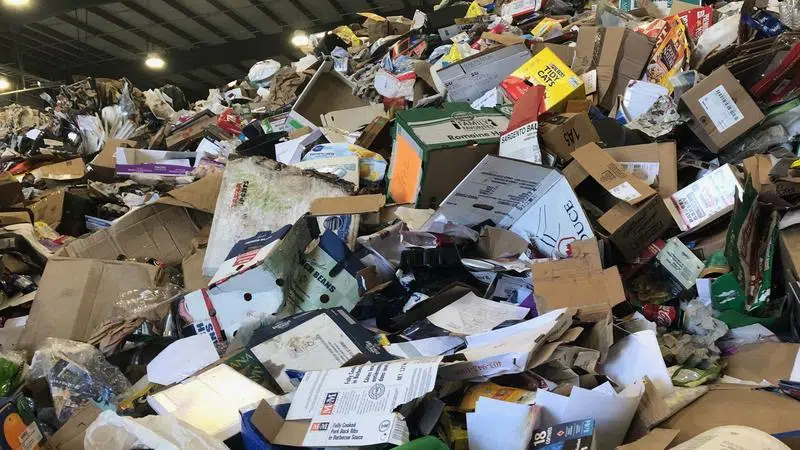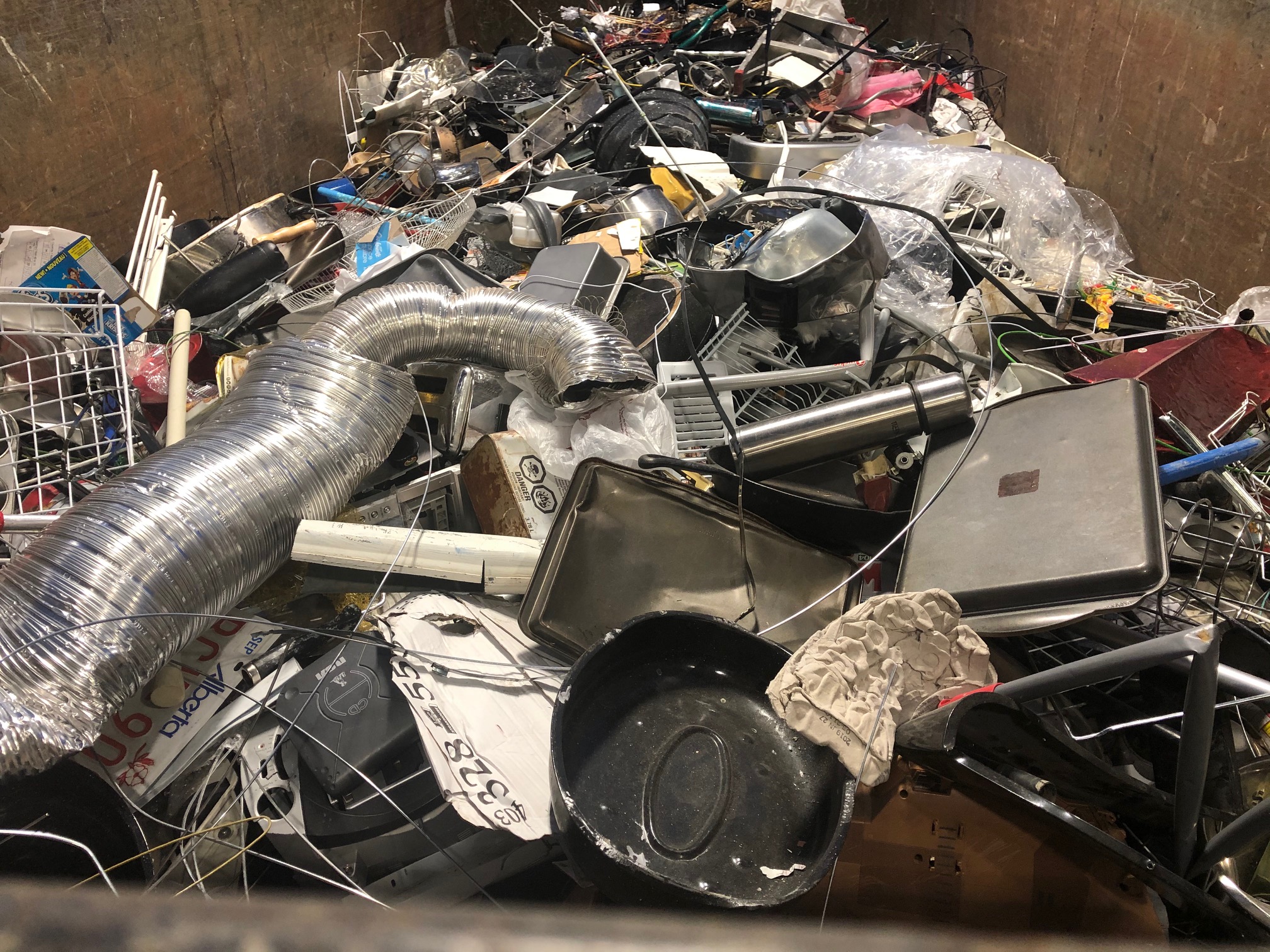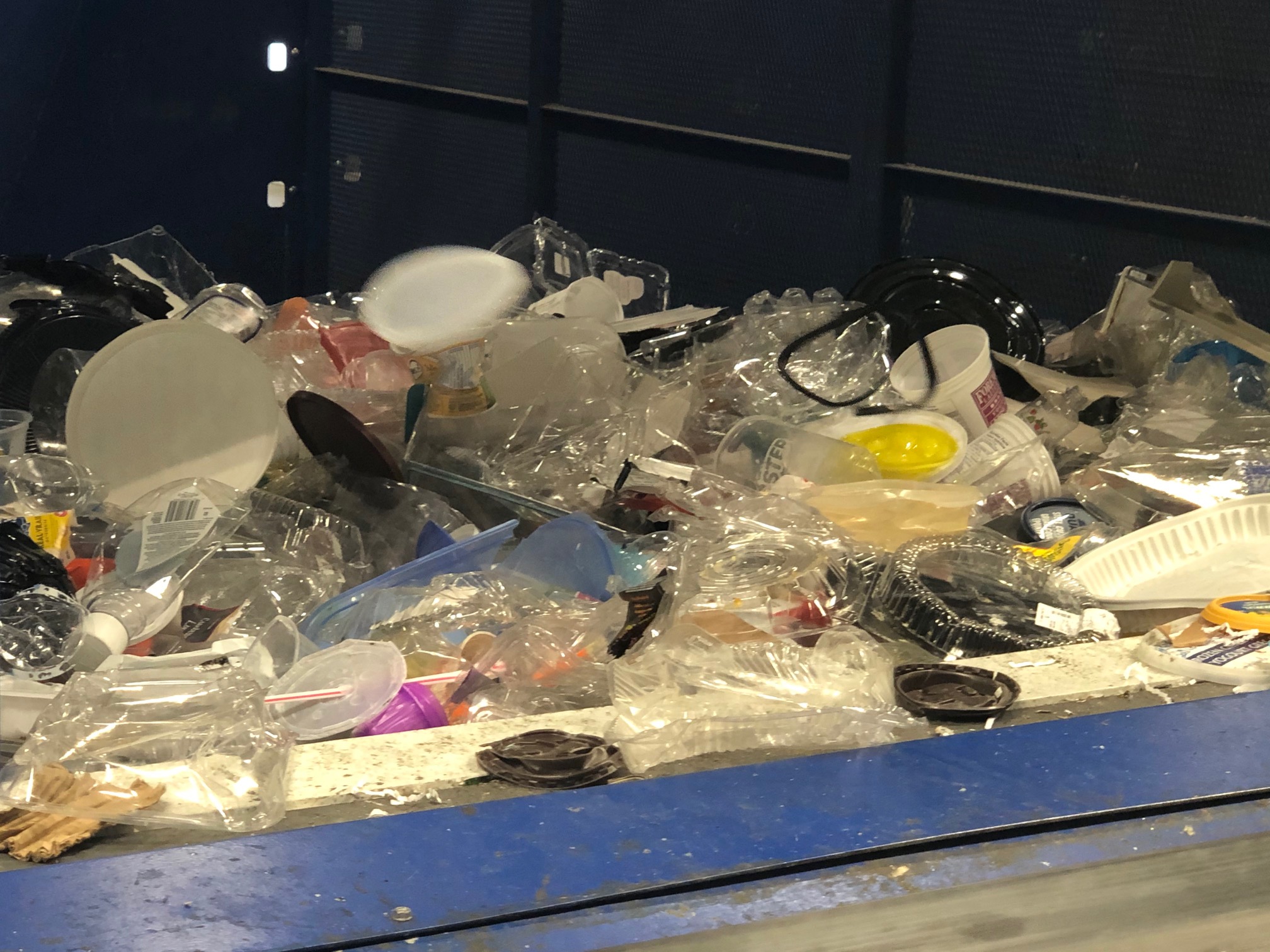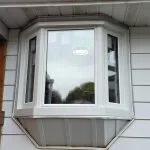
WATCH: Lethbridge’s recycling: from curbside pickup to shipping
LETHBRIDGE, AB – The city’s curbside recycling program is now almost six months old, and besides occasionally watching the recycling truck pick up the blue bins and methodically emptying them – not many people know or have seen what happens to all of those cans, all of that cardboard and all of those plastic containers residents collect every couple of weeks.
Tim Romus has been a waste and recycling driver for the last 15 years. His route includes hundreds of stops and he sees it all; from people who who’ve put propane tanks and other hazardous items in the garbage, to those who chase down the truck dressed only in a towel, to residents who have gotten to know him and give him Christmas presents each year. He says one of the biggest issues in Lethbridge is the wind blowing the bins over.
“Everything in the cart is not bagged. Or, it’s not supposed to be bagged. And if the cart tips over, obviously there’s a huge mess.”




